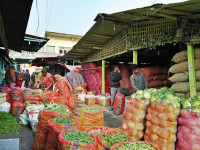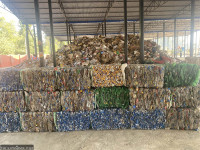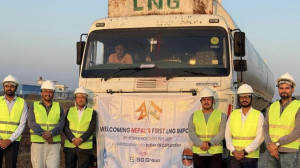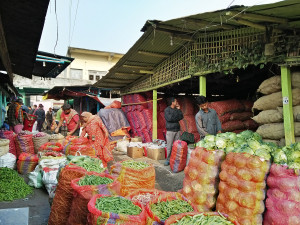Money
Large cardamom prices soar amid Ramadan demand
One of the world’s most expensive spices was traded at Rs2,800 per kg in Birtamode, Jhapa, the key trading hub, last week.
Post Report
Large cardamom prices have been rising, and market analysts say prices may go up further amid demand for the upcoming Ramadan, one of Muslims' holiest months of the year. The price rise has also been attributed to a fall in the output of spices in other producing nations like Bhutan and India.
Large cardamom, one of the world's most expensive spices, was traded at Rs2,800 per kg in the Birtamode, Jhapa, in eastern Nepal, the key trading hub, last week.
This year, the holy month of Ramadan is expected to begin on Friday, February 28, or Saturday, March 1, 2025. The exact timing is based on the sighting of the moon.
The local Muslim community uses large cardamom pods in popular biryani to symbolise prosperity and wealth.
Large cardamom prices reached a record high of Rs2,700 in 2014 but dropped to Rs850 in 2018, a dip of about 68 percent. The price again broke records in 2016, reaching an all-time high of Rs3,000 per kg. Prices began to decline steadily, sinking to a low of Rs700 per kg in mid-July 2022.
“As the price of large cardamom is on a rising trend, we have anticipated that prices will breach the previous record of Rs3,000 per kg in the coming days,” said Nirmal Bhattarai, president of the Federation of Large Cardamom Exporters, Nepal.
“With the price expecting to rise, farmers and traders have held around 60 percent of large cardamom.”
Large Cardamom has three types depending on quality.
The selected high-quality large cardamom is traded at Rs2,800 per kg, while the other quality is traded at Rs2,700 and Rs2,600 per kg, respectively.
India is the biggest buyer of Nepal’s large cardamom, absorbing 99 percent of its exports. The spice is re-exported to Pakistan and the Middle East, where it fetches high prices because of local preference for Nepali products.
Pakistan is the largest importer of large cardamom, purchasing roughly 60 percent of India’s exports. Pakistanis use large cardamom pods in biryani, a famous fried rice dish, to symbolise prosperity and wealth.
Nepali large cardamom or black cardamom has a distinct flavour profile due to a specific method of postharvest drying in bhattis (ovens), which explains the roasted smell and taste.
The smoky flavour would overwhelm a sweet cake or pudding, but in a spice rub for roasted meat or a full-flavoured stew, it imparts a smouldering depth no other spice can, according to experts.
Bhattarai said that as farmers and traders have held back the spice, the exact production from this year’s harvest is unknown.
However, the traders said that production is expected to drop by 25 percent in Nepal due to a climate change-induced disease. The disease has affected old and new saplings of large cardamom in the last two years.
According to the Agriculture Ministry statistics, Nepal produced 9,545 tonnes of large cardamom in 2019-20. Output dropped to 8,289 tonnes in 2020-21. The 2021-22 production rose slightly to 8,714 tonnes, and over 10,000 tonnes in 2022-23.
Nepal is the largest producer of large cardamom, accounting for 68 percent of the global production, followed by India and Bhutan.
The spice is grown in Sikkim, Darjeeling and Bhutan. Large cardamom was introduced in Ilam from Sikkim in 1865.
Large cardamom exports surged by 11.65 percent in the first five months of the current fiscal year, which ended in mid-December.
According to the Department of Customs, Nepal exported 2,074 tonnes of large cardamom worth Rs3.45 billion during the review period.
Shipment of large cardamom remained at Rs7.94 in the last fiscal year 2023-24.
Large cardamom is cultivated predominantly in four districts of eastern Nepal—Taplejung, Panchthar, Ilam, and Sankhuwasabha—which account for 87.04 percent of national production. Around 125,000 households are engaged in growing it.
October-November is the peak harvest season.
Large cardamom produced in Nepal is entirely organic and provides income to mostly low-income families in rural Nepal.
Farmers are expanding the large cardamom acreage beyond the eastern hill districts. The spice is also being grown in Dadeldhura and Lamjung.
Large cardamom is grown on 18,000 hectares in Nepal. Domestic consumption of large cardamom, however, is minimal.
Nepali large cardamom—also known as ‘black gold’ or ‘black cardamom’—belongs to the botanical family Zingiberaceae and is one of the most expensive spices in the world. According to a government report, it is an evergreen, perennial, and herbaceous plant grown on north-facing hill slopes.




 14.12°C Kathmandu
14.12°C Kathmandu














